 W
WRichard Barry, 7th Earl of Barrymore was an English nobleman, as well as an infamous rake, gambler, sportsman, theatrical enthusiast and womanizer.
 W
WSir John Edward George Bayley, 2nd Baronet was an English baronet and amateur cricketer.
 W
WThe Reverend Lord Frederick de Vere Beauclerk, an 19th-century Anglican priest, was an outstanding but controversial English first-class cricketer, the leading "amateur" player of the Napoleonic period.
 W
WWilliam "Silver Billy" Beldham was an English professional cricketer who played between the 1780s and 1810s. He is generally acknowledged as one of the greatest batsmen of the sport's underarm era. In 1997, he was selected by John Woodcock of The Times as one of his 100 Greatest Cricketers of All Time.
 W
WLord William Henry Cavendish-Bentinck, known as Lord William Bentinck, or simply Lord Bentinck, was a British soldier and statesman. He served as Governor-General of India from 1828 to 1835. He has been credited for significant social and educational reforms in India including abolishing sati, suppressing female infanticide and human sacrifice. Bentinck said that "the dreadful responsibility hanging over his head in this world and the next, if… he was to consent to the continuance of this practice (sati) one moment longer." Bentinck after consultation with the army and officials passed the Bengal Sati Regulation, 1829 there was little opposition. The only challenge came from the Dharma Sabha which appealed in the Privy Council, however the ban on Sati was upheld. He ended lawlessness by eliminating thuggee – which had existed for over 450 years – with the aid of his chief captain, William Henry Sleeman. Along with Thomas Babington Macaulay he introduced English as the language of instruction in India.
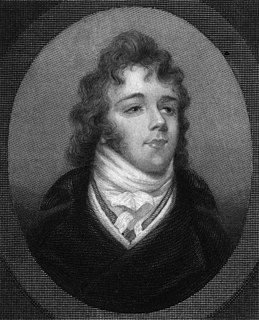 W
WGeorge Bryan "Beau" Brummell was an iconic figure in Regency England and for many years the arbiter of men's fashion. At one time he was a close friend of the Prince Regent, the future King George IV, but after the two quarrelled, and Brummell got into debt, he had to take refuge in France. Eventually he died shabby and insane in Caen.
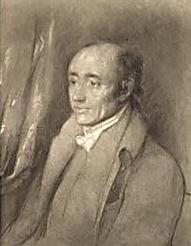 W
WCharles William Henry Montagu-Scott, 4th Duke of Buccleuch and 6th Duke of Queensberry, KT, styled Earl of Dalkeith until 1812, was a British landowner, amateur cricketer and Tory politician.
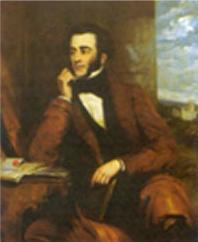 W
WHenry John George Herbert, 3rd Earl of Carnarvon, FRS, styled Lord Porchester from 1811 to 1833, was a British writer, traveller, nobleman, and politician.
 W
WJames Henry Dark was an English professional cricketer who later became a noted patron of the sport and was, from 1835 to 1864, the proprietor of Lord's Cricket Ground. He was the brother of Benjamin Dark.
 W
WJohn Bligh, 4th Earl of Darnley, styled Lord Clifton until 1781, lord of the Manor of Cobham, Kent, was a British peer and cricketer.
 W
WBrownlow Cecil, 2nd Marquess of Exeter, styled Lord Burghley until 1804, was a British peer, courtier, and Tory politician. He held office under the Earl of Derby as Lord Chamberlain of the Household in 1852 and as Lord Steward of the Household between 1858 and 1859.
 W
WSir Bellingham Reginald Graham, 7th Baronet was an English Baronet.
 W
WCharles Cavendish Fulke Greville was an English diarist and an amateur cricketer who played first-class cricket from 1819 to 1827. His father Charles Greville was a second cousin of the 1st Earl of Warwick, and his mother was Lady Charlotte Bentinck, daughter of the 3rd Duke of Portland.
 W
WDavid Harris was an English cricketer who played first-class cricket from 1782 to 1798.
 W
WJohn Moyer Heathcote was the son of John Heathcote. He was an English first-class cricketer. He is recorded as a batsman for Cambridge University in two matches in 1820, totalling 33 runs with a highest score of 19.
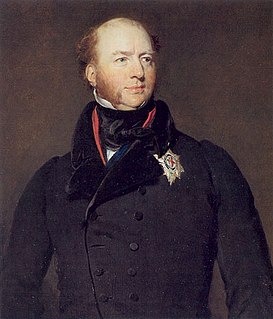 W
WFrancis Charles Seymour-Conway, 3rd Marquess of Hertford,, styled Viscount Beauchamp between 1793 and 1794 and Earl of Yarmouth between 1794 and 1822, was a British Tory politician and art collector.
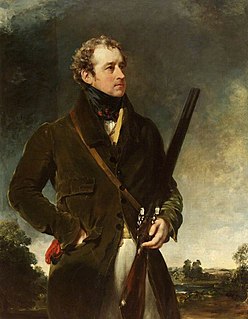 W
WHenry Richard Hoare (1784–1836) was an English amateur cricketer.
 W
WWilliam Hopkins FRS was an English mathematician and geologist. He is famous as a private tutor of aspiring undergraduate Cambridge mathematicians, earning him the sobriquet the "senior-wrangler maker."
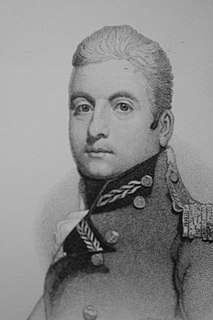 W
WGeorge Gordon, 9th Marquess of Huntly,, styled Lord Strathavon until 1795 and known as The Earl of Aboyne from 1795 to 1836, was a Scottish peer.
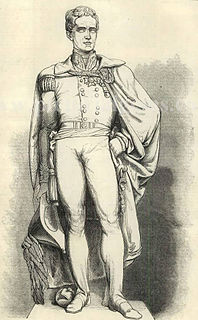 W
WMajor General Sir John Thomas Jones, 1st Baronet was a British officer in the Royal Engineers who played a leading engineering role in a number of European campaigns of the early nineteenth century. Jones was revered by the Duke of Wellington and asked to advise on fortifications including the modernisation of the defences in Gibraltar. He was also notable as an English amateur cricketer who made six first-class appearances.
 W
WSir John Lister-Kaye, 1st Baronet was a noted English amateur cricketer in the late 18th century. His career spanned the 1787 to 1798 seasons and he played mainly for Marylebone Cricket Club and Surrey. He made 12 known appearances in first-class cricket matches.
 W
WThe Honourable Douglas James William Kinnaird was an English banker, politician, friend of Lord Byron and amateur cricketer. He was a Managing Partner in the banking firm of Ransom & Co. He also briefly served as Member of Parliament for Bishop's Castle from 1819 to 1820.
 W
WGeneral Sir John Lambert was a British Army officer who served in the French Revolutionary Wars, the Napoleonic Wars and the War of 1812. He is best known for his consummate actions whilst commanding the tenth brigade during the Battle of Waterloo, which kept open the vital line of communication between Hougoumont farmhouse and the rest of the Allied army.
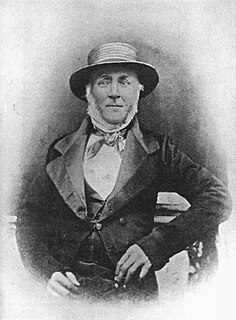 W
WWilliam Lambert was an English professional cricketer in the first two decades of the 19th century. Playing mainly for Surrey from 1801, but also for Marylebone Cricket Club (MCC) and some other county teams, Lambert was a right-hand batsman and an underarm slow bowler.
 W
WWilliam Saunders Sebright Lascelles PC was a British Whig politician. He served as Comptroller of the Household from 1847 to 1851.
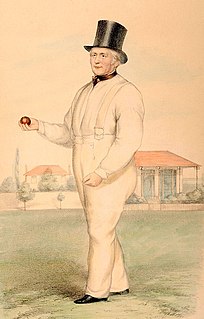 W
WFrederick William Lillywhite was an English first-class cricketer during the game's roundarm era. One of the main protagonists in the legalisation of roundarm, he was one of the most successful bowlers of his era. His status is borne out by his nickname: The Nonpareil.
 W
WThomas Lord was an English professional cricketer who played first-class cricket from 1787 to 1802. He made a brief comeback, playing in one further match in 1815. Overall, Lord made 90 known appearances in first-class cricket. He was mostly associated with Middlesex and with Marylebone Cricket Club (MCC) as a ground staff bowler.
 W
WStephen Lushington generally known as Dr Lushington was a British judge, Member of Parliament and a radical for the abolition of slavery and capital punishment. He served as Judge of the High Court of Admiralty from 1838 to 1867.
 W
WGeneral Sir Peregrine Maitland, GCB was a British soldier and colonial administrator. He also was a first-class cricketer from 1798 to 1808 and an early advocate for the establishment of what would become the Canadian Indian residential school system.
 W
WSir Horatio (Horace) Mann, 2nd Baronet was a British politician who sat in the House of Commons between 1774 and 1807. He is remembered as a member of the Hambledon Club in Hampshire and a patron of Kent cricket. He was an occasional player but rarely in first-class matches.
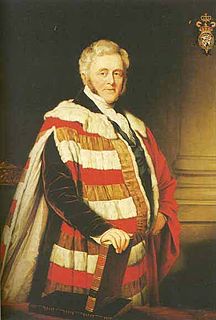 W
WGeorge Spencer-Churchill, 6th Duke of Marlborough, DCL, styled Earl of Sunderland until 1817 and Marquess of Blandford between 1817 and 1840, was a British nobleman, politician, and peer. The great-grandfather of Sir Winston Churchill, he served as Lord-Lieutenant of Oxfordshire between 1842 and 1857.
 W
WRichard Mills was an English professional cricketer who played first-class cricket between 1825 and 1843, primarily for teams in Kent. He was considered one of the best professional cricketers of his era.
 W
WGeorge Osbaldeston, best known as Squire Osbaldeston, was an English politician who served as a Member of Parliament but who had his greatest impact as a sportsman and first-class cricketer.
 W
WFuller Pilch was an English first-class cricketer. Described as "the greatest batsman ever known until the appearance of W. G. Grace", the right-handed batsman Pilch played 229 first-class matches between 1820 and 1854 for an assortment of counties, including Kent, Hampshire, Surrey and Sussex, as well as Norfolk and Cambridge Town Club. An early pioneer of batting, Pilch's advert of the "Pilch poke", or art of playing the ball forward, was an early manifestation of modern batting practices.
 W
WFrederic Reynolds was an English dramatist. During his literary career he composed nearly one hundred tragedies and comedies, many of which were printed, and about twenty of them obtained temporary popularity. Reynolds' plays were slight, and are described as having been "aimed at the modes and follies of the moment". He is still occasionally remembered for his caricature of Samuel Ireland as Sir Bamber Blackletter in Fortune's Fool, and for his adaptations of some of Shakespeare's comedies.
 W
WCharles Lennox, 4th Duke of Richmond, 4th Duke of Lennox, 4th Duke of Aubigny, was a Scottish peer, soldier, politician, and Governor General of British North America.
 W
WEdward James Seymour was an English physician and medical writer.
 W
WSir John Shelley, 6th Baronet was an English landowner, Member of Parliament and amateur cricketer.
 W
WThomas Assheton Smith was an English landowner and all-round sportsman who played a major part in the development of the Welsh slate industry.
 W
WThomas Assheton Smith was an English landowner and all-round sportsman who was notable for being one of the outstanding amateur cricketers of the early 19th century. He was a Tory politician who sat in the House of Commons from 1821 to 1837. He was also known for his pioneering work on the design of steam yachts in conjunction with the Scottish marine engineer Robert Napier.
 W
WGeorge Granville Sutherland-Leveson-Gower, 2nd Duke of Sutherland, KG, styled Viscount Trentham until 1803, Earl Gower between 1803 and 1833 and Marquess of Stafford in 1833, was a British Whig MP and peer from the Leveson-Gower family.
 W
WHenry James Tufton, 11th Earl of Thanet was a peer in the peerage of England and a noted English cricketer of the 1790s.
 W
WSackville Tufton, 9th Earl of Thanet succeeded to his title in April 1786, following the death of his father Sackville Tufton, 8th Earl of Thanet. Two of his younger brothers were John Tufton and Henry Tufton, 11th Earl of Thanet, both well-known amateur cricketers.
 W
WThe Hon. Thomas James Twisleton (1770–1824) was an English churchman, Archdeacon of Colombo from 1815 to 1824. His early marriage has been considered a contribution to the use by Jane Austen of amateur theatricals as a plot device in her novel Mansfield Park. He was also noted as an amateur cricketer.
 W
WGodfrey Thomas Vigne was an English amateur cricketer and traveller.
 W
WWilliam Ward was an English financier, and noted cricketer.
 W
WEdward Gower "Ned" Wenman was an English first-class cricketer whose career spanned the 1825 to 1854 seasons. A specialist wicket-keeper, he was a prominent member of the great Kent team of the 1840s which also featured Nicholas Felix, William Hillyer, Alfred Mynn and Fuller Pilch. Wenman is generally remembered as one of the greatest wicketkeepers of the 19th century. He came from a cricketing family, other first-class players being his cousins George and John, his son William and his brother Charles. In his first-class career, Wenman made 146 appearances, totalling 3,204 runs with a highest score of 73 not out and taking 45 wickets bowling occasionally with a slow underarm style. He held 118 catches and completed 87 stumpings.
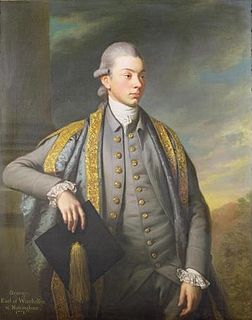 W
WGeorge Finch, 9th Earl of Winchilsea, was an important figure in the history of cricket. His main contributions to the game were patronage and organisation but Winchilsea, an amateur, was also a very keen player. Finch served with the 87th Foot at the time of the American Revolutionary War from its formation in 1779 to its disbanding in 1783, with the temporary ranks of major and lieutenant-colonel.
 W
WSir George Wombwell, 2nd Baronet was an English first-class cricketer with amateur status who was active in the 1790s playing for Marylebone Cricket Club (MCC). He was born the son of Sir George Wombwell, 1st Baronet and succeeded his father in 1780.